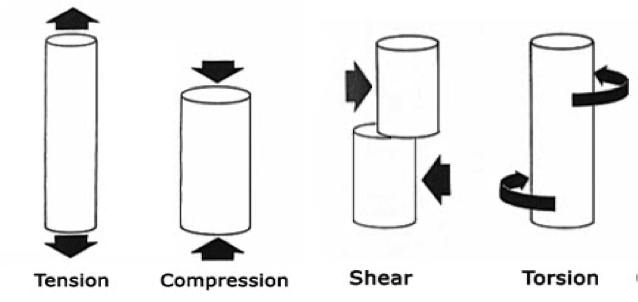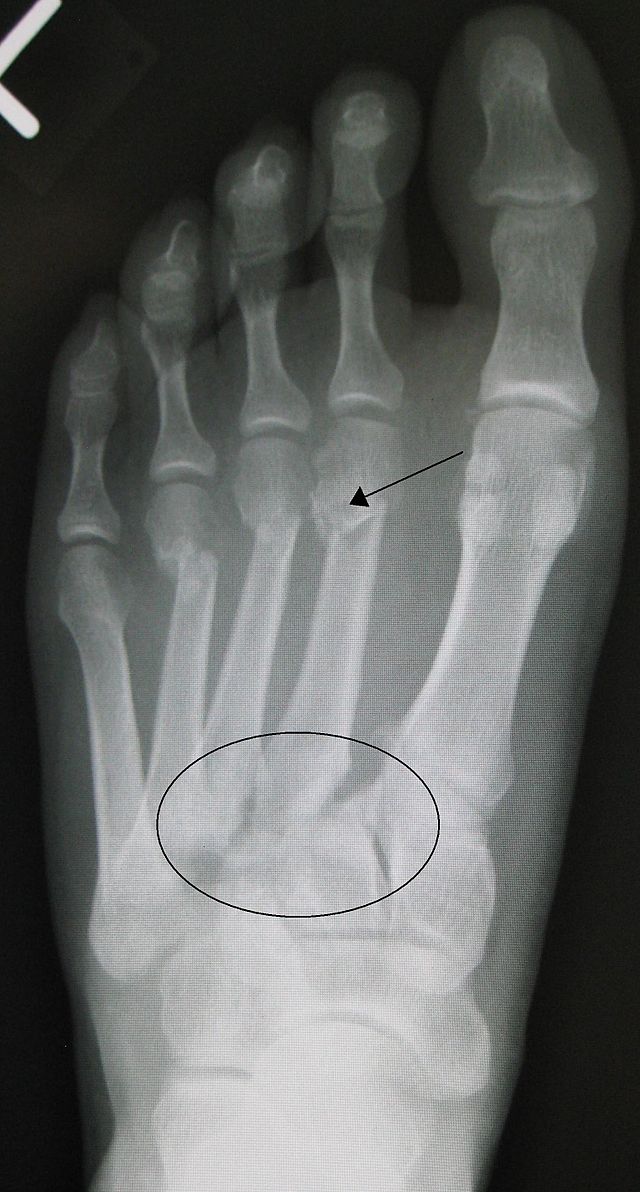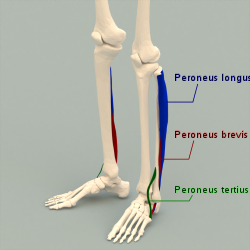Metatarsal Stress Fractures in the Athletic Population
Metatarsal Stress Fractures in the Athletic Population
Definition/ Description
A metatarsal stress fracture is when the metatarsal bones of the foot experience a form of stress and crack or break. This can take place in one of the metatarsals or multiple and can be at the head, shaft or base of the bone (1). Theses fractures may happen to anyone however they are very common in athletes such as runners, basketball players, and ballet dancers.
Biomechanically, there are different forces that could lead to these fractures; tension, compression, shear, and torsion.
Figure 1. Types of forces (2)
The most common way to fracture the metatarsal is when shear forces are acting on the bone. In comparison to the other types, shear forces cause the most weakness in bones due to their direction causing the bone to be the most vulnerable to a fracture (3). The fifth metatarsal is is exposed and also more susceptible to these shear forces. This combination puts the fifth metatarsal at the highest likelihood of fracture – 59% (4).
Runners While running, there are shear forces on the first and second metatarsals. The second metatarsal is more likely to get fractured due to how much it bends the while running. The moment created by this bending can lead to a stress fracture over time. The probability of a stress fracture in the second metatarsal is also increased if it is longer than the first metatarsal. This is because the force increases significantly therefore creating a larger moment (5).
Basketball Players Another common fracture is an avulsion fracture, which is caused by tensile forces. These forces can pull apart the axial end of the bone. The avulsion fracture is more often due to peroneus brevis tugging on the fifth metatarsal (3). When the ankle is plantar flexed and this can cause a fracture at the base of the metatarsal since the muscles and fascia suddenly get jerked into a different position.
Fractures like this are very often found in basketball players. When they experience repetitive tensile forces or sudden tensile force, this leads to a stress fracture (6).
Ballet Dancers Repetitive compressive forces can also lead to stress fractures and these ones are oblique in nature. These are often seen in ballet dancers when they are en pointe. This is because they are in plantar flexion but it is a more extreme form of movement. There is strain caused by this on the ligaments and bones of the foot, especially around the LisFranc – tarsometatarsal – joints. When dancing en pointe, the centre of gravity gets shifted more anteriorly to the shaft of the metatarsals, which puts more compressive forces on the metatarsals. When these forces are sudden or they are repetitive – where the muscles and bones are not strong enough yet – this could lead up to a stress fracture (7).
Figure 2. Lis Franc Fracture to the second and fourth metatarsal (8)
Soccer Players Torsion can also cause a stress fracture. It was found that the insertions of peroneus longest and peroneus tertius induce strain on the fifth metatarsal. Due to their position, there is torsion created on the metatarsal. When the metatarsal is exposed to these forces repetitively, it can become a stress fracture (9). This particular fracture happens at the base of the fifth metatarsal and is known as a Jones’ fracture (10) and commonly found in basketball and soccer players.
Figure 3. Peroneus Muscles (11)
There are studies that show correlations with decreased muscular strength and increased chance of fracture (12). If the muscles are strong and flexible, this gives the foot a lot more stability and when there is mobilisation, the muscles are able to stretch enough without tearing. A study with soccer players tested the correlation between toe-grip strength and injury. It was shown that those with a lower toe grip strength were significantly more prone to stress fractures (13). The metatarsals can only sustain a certain amount of load depending on the strength of the muscles surrounding them as well as the bones itself. If the muscles are stronger, they can withstand more force and therefore the metatarsals would be less susceptible to a stress fracture.









